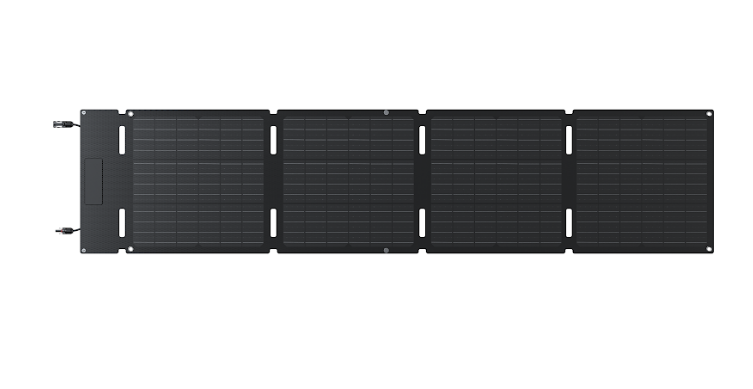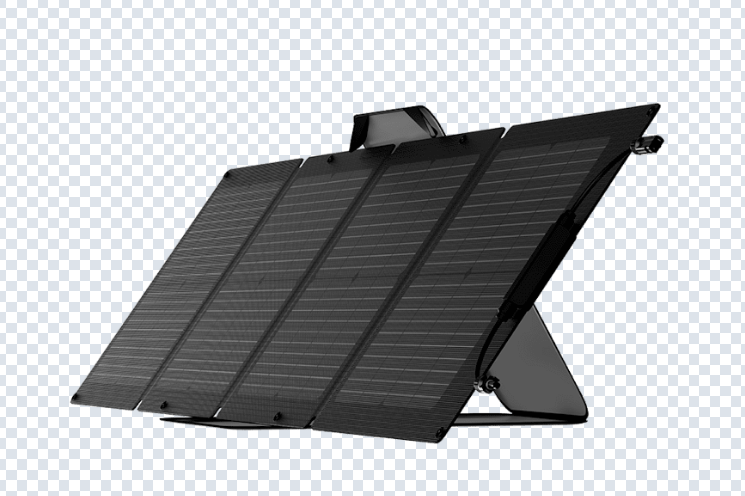How Do Solar Garden Lights Work?
Solar garden lights offer a simple way to illuminate your garden, pathways, or patio. They run on sunlight, so there's no need for wiring, and they won't add to your electricity bill. People often use them to make paths easier to see, to highlight plants, or just to make outdoor areas look nicer, utilizing various forms from individual stake lights to decorative string lights solar draped over bushes or along fences. They are popular because they're kind to the environment, cost nothing to run after you've bought them, and are very easy to set up. This guide will explain clearly how these lights operate.
What's Inside a Solar Garden Light?
To see how solar garden lights operate, it helps to know their main parts. Each part has a specific job in collecting sunlight, storing energy, and then lighting up when it's dark.
Solar Panel: Turn Sunlight into Power
Usually found on top of the light, the flat solar panel's main role is to convert sunlight directly into electricity. Most are made from either monocrystalline silicon (often darker, more uniform, and slightly better at converting sunlight, especially in less-than-perfect conditions) or polycrystalline silicon (typically with a speckled, blueish appearance). Its position, size, and manufacturing quality are important for how much power it can gather.
Rechargeable Battery: Store Power
Located inside the light's casing, the rechargeable battery stores the electrical energy produced by the solar panel during the day so the light can operate at night. Nickel-Metal Hydride (NiMH) batteries are common for their dependability and affordability, while Lithium-ion (Li-ion) batteries often offer more storage capacity for their size and may last longer, though they can be more affected by extreme temperatures. A battery's capacity, measured in milliampere-hours (mAh), indicates how much energy it can store; a higher mAh generally means a longer run time, but all batteries eventually wear out.
LED: The Light Source
The light itself almost always comes from an LED (Light Emitting Diode). LEDs are chosen because they use very little electricity to produce light, meaning they don't waste as much energy as heat, which is crucial for battery-powered devices. They also boast a very long lifespan, often many thousands of hours, and are quite durable. LED brightness is measured in lumens; solar garden lights, including popular string lights solar configurations which feature multiple small LEDs, usually have a lower lumen output per bulb than lights you plug into an outlet, as they're meant for creating softer, ambient lighting or highlighting specific spots, rather than brightly illuminating a whole area.
Controller Circuitry: Manage Operations
An internal small circuit board, known as the controller, acts as the brain of the light. It manages how the battery charges from the solar panel, ensuring it's done safely and efficiently, and includes safeguards against overcharging or draining the battery too much. The controller also works with the light sensor to automatically turn the LED on when it gets dark and off when daylight returns, making the lights very convenient.
Light Sensor: Detect Daylight and Darkness
The light sensor is what allows the solar light to turn on and off automatically. It detects the presence or absence of daylight, often using a photoresistor whose electrical resistance changes with the amount of light it receives—low resistance in bright light, high in the dark. The controller circuit reads this change to either keep the LED off and charge the battery (daytime) or switch the LED on (nighttime).
Housing and Mount: Protection and Installation
The housing is the light's outer body, protecting the solar panel, battery, LED, and circuitry from weather conditions like rain, snow, and dust, as well as from physical impacts. These are typically made from durable materials such as strong plastics, metals like stainless steel or aluminum, or sometimes glass over the LED. For installation, lights usually come with a stake for pushing into the ground or a bracket for attaching to a wall, fence, or post, and the housing's design also contributes to the light's overall appearance, with many styles available.
How Solar Lights Work: The Day and Night Cycle
Solar garden lights follow a simple cycle each day, automatically switching between charging and lighting up.
Daytime: Charging the Battery
During the day, the process begins when sunlight strikes the solar panel. The solar cells in the panel convert this light energy into Direct Current (DC) electricity. The controller then directs this electricity to the rechargeable battery, ensuring it charges correctly and stores the energy. At the same time, the light sensor recognizes it's daytime and signals the controller to keep the LED light off, so all collected power goes into charging the battery.


Nighttime: Lighting Up
When the sun sets and darkness falls, the light sensor detects the change and informs the controller. The controller then activates the light, drawing the stored power from the battery and sending it to the LED. The LED turns on, providing illumination. How long the light stays on depends on the amount of charge the battery receives during the day and the power consumption of the LED.
The Automatic Daily Cycle
This cycle of charging by day and lighting up by night repeats automatically. When morning comes, the light sensor detects daylight and signals the controller. The controller then turns the LED off, conserving any remaining battery power, and the solar panel begins to charge the battery again for the next night. This self-sufficient, automatic operation is what makes solar garden lights so convenient and easy to use.
What Affects Solar Garden Light Performance?
Even though solar garden lights are designed to work on their own, a few things can change how well they perform, how bright they are, and how long they stay lit at night. Knowing about these can help you get the best from your lights.
Amount of Sunlight
This is the most important thing.
- Hours of Direct Sun: Most solar lights need about 6 to 8 hours of direct sun shining on them to get a full charge. If they get less, especially for a few days in a row, they won't stay lit as long at night.
- Sunlight Strength: Bright, sunny days are best for charging. Cloudy days mean much less solar energy reaches the panel, so the battery won't charge as much, and the light might be dimmer or not last as long.
- Shade: Anything that blocks the sun from hitting the solar panel – like trees, bushes, buildings, or even large garden decorations – will stop it from charging well. Even if only part of the panel is shaded, it can make a difference.
Battery Quality and Age
The battery, which we talked about earlier as the part that stores power, is also key.
- Battery Getting Older: Like all rechargeable batteries, the ones in solar lights wear out over time. After a year or two (sometimes longer, if it's good quality and conditions are good), the battery won't be able to hold as much charge as it did when it was new. This means shorter run times.
- Initial Battery Quality: Better quality batteries usually last longer. Cheaper lights might come with batteries that wear out faster.
- Running Too Low Often: The controller helps prevent the battery from completely draining, but if a light often doesn't get enough sun and the battery frequently gets very low, it can strain the battery and reduce its life.
Solar Panel Size and Efficiency
The solar panel itself, the part that collects sunlight, matters too.
Panel Size: A larger solar panel can usually collect more sunlight in the same amount of time. This helps the battery charge faster and more fully, especially when the sunlight isn't very strong.
Panel Efficiency: How well the panel turns sunlight into electricity (monocrystalline panels are generally better at this than polycrystalline ones) also affects charging. More efficient panels do a better job, especially on cloudy days.
Cleanliness of the Solar Panel
Something simple that people sometimes forget is keeping the solar panel clean. If dust, dirt, pollen, or bird droppings cover the panel, it's like having it in the shade – it can't get as much sun, so it won't charge as well.
Ambient Temperature
Very hot or very cold weather can affect the battery.
- High Temperatures: Too much heat can make batteries wear out faster and can also make charging less efficient.
- Low Temperatures: Extreme cold can make batteries temporarily hold less charge and make it harder for them to supply power. This might mean the light is dimmer or doesn't stay on as long in winter. Most batteries used in solar lights can handle a range of temperatures, but they work best when it's not too hot or too cold.
Proper Placement
Proper placement is vital for all types of solar lights.() For individual units where the panel is integrated, the entire light needs good sun. For systems like string lights solar, it's crucial that their separate solar panel is placed in a spot that gets plenty of direct sun during the day, even if the lights themselves are arranged in a shadier decorative area.
Easy Maintenance for Optimal Solar Garden Light Performance
To keep your solar garden lights working well for a long time, a few simple maintenance steps can help a lot. These don't take much time.


Clean the Solar Panel:
Clean the Solar Panel is the most important thing. Every so often, wipe the solar panel with a soft, damp cloth to get rid of dust, dirt, or anything else covering it. If it's very dirty, you can use a tiny bit of mild soap, but don't use harsh cleaners that could scratch the panel. Clean panels charge much better.
Check Battery Connections (if you can reach them):
Some solar lights let you open the battery area. If your lights aren't working right, and you feel okay doing it, you can check if the battery is sitting in place properly and if its metal contacts are clean. Sometimes just taking the battery out and putting it back in can fix a loose connection.
Replace the Battery:
As mentioned earlier, rechargeable batteries wear out. You'll likely need to replace the battery every 1 to 3 years, based on the battery type and how much it's used. If your light is getting plenty of sun but still doesn't stay on long, the battery probably needs replacing. Make sure to use the same type of battery (like NiMH or Li-ion) and one with the same specifications (voltage and mAh capacity) as the old one, or check what the light's manufacturer suggests.
Clear Obstructions:
Check around your solar lights from time to time. Trim any plants or tree branches that might have grown over them and are now shading the solar panels during the day. Also, make sure no other bright lights nearby confuse the light sensor at night.
Doing these simple things can help your solar lights shine brighter, last longer each night, and have a longer overall life.
Maintain Your Solar Garden Lights!
Solar garden lights work by charging batteries with solar panels during the day, then automatically powering LED lights at night. Performance depends on adequate sunlight, clean panels, and proper placement away from shade. Simple maintenance like regular cleaning and occasional battery replacement keeps these eco-friendly lights providing reliable, cost-free illumination for years. Understanding their operation helps you optimize performance and enjoy automatic outdoor lighting with minimal effort.